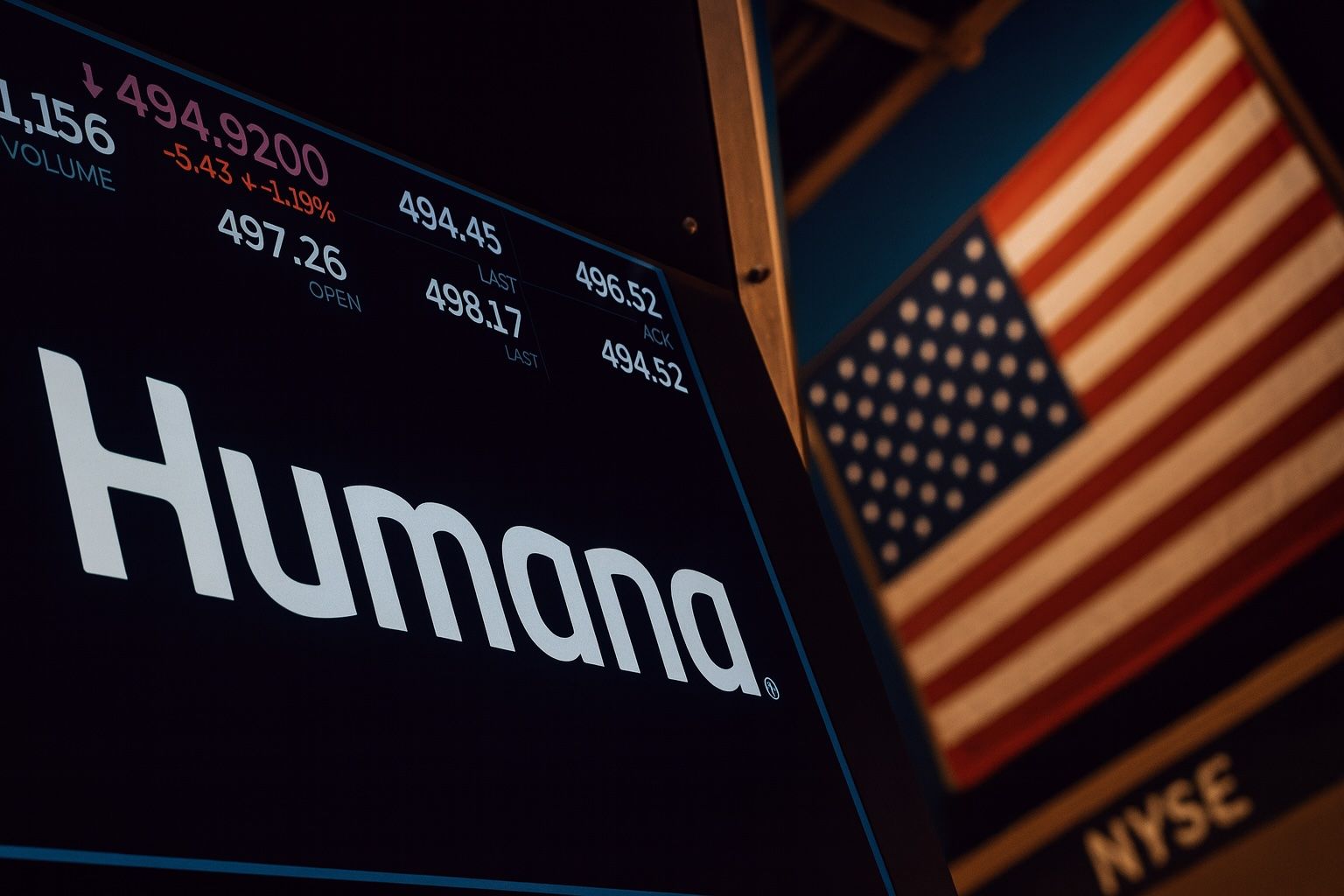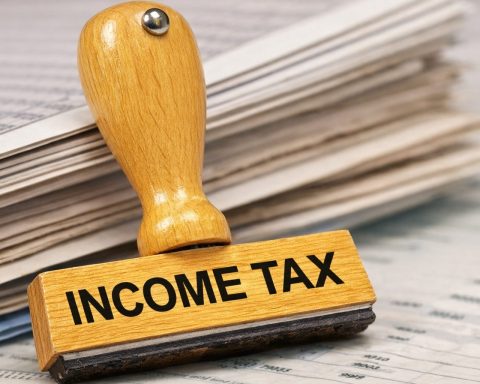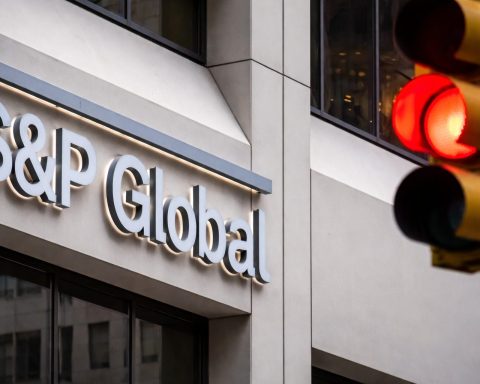- Stock Price Jump (Oct 3, 2025): Humana (NYSE:HUM) was trading around $272.05 midday (Oct 3), up over +6.0% on the day [1]. This follows gains on Oct 2, 2025 and reflects a sharp rebound from last week’s pullback.
- Medicare Advantage Update: The stock rally was driven by a positive surprise in Medicare Advantage “star” ratings for 2026. Humana revealed that ~20% of its members are in 4+‑star plans (vs. a much lower base), and 14% in 4.5‑star plans (up from 3% in 2025) [2]. Investors cheered this news – Humana shares jumped ~3% on Oct 2 following the announcement [3] and added further on Oct 3.
- Shift in Medicare Coverage: Recently, Humana said it will trim its Medicare Advantage footprint (plans in 46 states vs 48 this year, cutting coverage in about 85% of U.S. counties) as the insurer exits less‑profitable markets amid rising costs [4] [5]. This sector-wide pullback (also announced by CVS/Aetna and UnitedHealth) reflects soaring medical costs and government cuts [6] [7].
- Financials & Guidance: In Q2 2025, Humana reported $32.39 billion in revenue (+9.6% YoY) and GAAP EPS of $4.51 (Adj EPS $6.27) [8]. The company raised full-year 2025 guidance – now expecting ~$17.00 in adjusted EPS and at least $128 billion in revenue [9]. GAAP EPS guidance was trimmed (to ~$13.77) due to one‑time adjustments [10]. Key metrics: Market cap ~$29.7 billion, forward P/E ~14.3, and dividend yield ~1.4% [11].
- Analyst Outlook: Wall Street’s consensus on HUM is cautiously neutral. 21 analysts average a “Hold” rating, with a 12‑month price target around $289 [12]. Price targets range widely ($245 – $344) [13]. Notably, Barclays cut its target to $245 on Oct 3, 2025 [14]. Conversely, some bullish analysts recently raised targets (e.g. Bernstein to $341 on Sept 5).
- Market Sentiment: The broader market rallied on Oct 3 amid Fed rate‑cut optimism and U.S. “shutdown” news [15] [16]. Healthcare stocks led gains (+1.3% on the S&P), with Humana among the top performers (+5.6%) [17]. Investors appear to be rewarding the Medicare updates and improved guidance, though volatility remains high (14 moves >5% in past year [18]).
Stock Performance (Oct 3, 2025)
As of midday Oct 3, Humana shares were $272.05, up about +6.01% on the day [19]. Yesterday’s close (Oct 2) was $256.62 [20], so HUM has recovered much of last week’s slide. In fact, Oct 1 saw a ~5% drop (on news of scaling back Medicare Advantage plans) [21], but Oct 2’s star rating news spurred a ~3% gain [22]. By Friday morning, industry data show HUM stock as one of the S&P 500’s top gainers (+5.6%) [23]. Year‑to‑date Humana is roughly flat, trading ~19% below its 52-week high (~$312 in Sept 2025) [24].
Recent News Driving HUM
Medicare Star Ratings Breakthrough
On Oct 2, Humana filed a regulatory update revealing preliminary 2026 Medicare Advantage star ratings. About 20%of its MA members are in 4‑star or above plans (benefiting from higher CMS bonus payments) [25]. Impressively, 14% are in 4.5-star plans (vs only 3% in 2025) [26]. Humana said these results were “in line with its assumptions,” giving confidence in its financial outlook [27]. CEO Jim Rechtin acknowledged the ratings are still below Humana’s standards but emphasized the company’s push to regain top-tier ratings by 2027 [28] [29].
This positive update boosted investor sentiment: Humana’s stock jumped 3.1% to $254.68 on Oct 2 [30]. (Finviz and MarketWatch noted an afternoon rally of ~6%, though shares later settled around +2–3% for the day [31]). Key drivers were the reaffirmed guidance – Humana said it will hit the $17/share adjusted EPS target already announced – and the clear alignment of ratings with its plans [32] [33]. As one report puts it, “Humana affirmed its full-year earnings guidance of ~$17.00 in adjusted EPS” alongside the star ratings news [34] [35].
Premiums & Plan Reductions
On Oct 1, Humana announced premium cuts for 2026: about 83% of standalone Medicare Part D drug plans will see lower premiums [36]. This echoes broader industry efforts to ease affordability amid regulatory scrutiny. At the same time, Humana (like rivals CVS/Aetna and UnitedHealth) scaled back Medicare Advantage offerings for 2026. It will operate in 46 states (down from 48) and cover ~85% of U.S. counties [37] [38]. This move is a response to “higher utilization and government payment cuts”, as insurers cite CMS funding cuts and rising costs as creating “headwinds that no organization can ignore” [39] [40]. For example, UnitedHealth said MA cost pressures forced it out of 109 counties [41]. Healthcare Dive reports that all three major carriers are trimming unprofitable geographies to bolster shrinking margins [42] [43].
Humana’s pullback was well-telegraphed but still weighed on the stock on Oct 1 (a ~5.2% drop as noted by analysts) [44]. However, investors now appear to focus on the industry‑wide context: smaller insurers and competitors stand to gain market share even as seniors face fewer plan options [45] [46]. Notably, Humana emphasized that over 80% of its MA members remain in plans with stable benefits [47], suggesting it is focusing on profitable, quality offerings.
Financial Results & Metrics
Humana’s recent financials show solid growth with some margin pressure. In Q2 2025 (ended June 30), revenue was $32.39 billion (up ~9.6% YoY) [48]. Net income was $741 million, and GAAP EPS $4.51 (below the $6.27 adjusted EPS due to some non‑core charges) [49]. The benefit ratio was ~89.9%, roughly flat YoY, reflecting high Medicare cost trends (insurance operating margin ~8.3%). The strong operating performance – driven by CenterWell (primary care) growth and prudent pricing – allowed Humana to raise full-year outlook [50]. Adjusted EPS guidance was raised to ~$17.00 (from $16.25) [51], and revenue guide increased to “at least $128 billion”. (GAAP EPS guidance was trimmed to ~$13.77 due to investment/write-down effects [52].)
Key valuation metrics (Oct 3 data [53]):
- Market Cap: ~$29.7 billion.
- Forward P/E (NTM): ~14.3.
- TTM P/E (excludes extra items): ~18.9.
- Dividend Yield: ~1.4% (forward) [54].
- Price/Book: ~1.63 (quarterly).
Humana’s balance sheet is moderate: roughly $11.7B long-term debt (debt/equity ~69%). It has maintained share buybacks (spent ~$100M in Q2 [55]) and ended Q2 with ~$1.3B free cash flow.
Analyst Commentary & Outlook
Analysts have mixed views on HUM. As of early Oct 2025, most Wall Street firms rate Humana “Hold”. MarketBeat notes 21 analysts (0 sell, 14 hold, 7 buy) give a consensus Hold rating [56]. The consensus 12‑month price target is ~$289 (median ~$290), implying modest upside to the current price [57]. Targets span ~$245 (Goldman/BofA, etc.) up to $344 (Goldman had $344 from Apr 2024) [58].
Barclays’ update (Oct 3, 2025): Andrew Mok reiterated Equal‑Weight on HUM but cut his one-year target from $315 to $245 [59], reflecting near-term headwinds. Barclays had previously considered the worst (stars litigation) priced in. Other recent notes (late Sept) show Evercore at $295 In‑Line, Bernstein up to $341 Outperform [60].
Earnings Call Insights: CEO Jim Rechtin and CFO Celeste Mele emphasized tight cost control and strategic shifts. Rechtin bluntly summed up the challenge: “We don’t see bad membership. We see bad benefit packages and product.” [61]. In other words, he blamed unfavorable plan designs (star rating issues) rather than customer base. He pledged urgency on 2027/28 star ratings improvements and confirmed the company will stick to its new $17 EPS target [62] [63]. Mele noted the 2025 star lawsuit dismissal was a procedural matter (due to an unresolved appeals process) and that Humana has re-filed the case after exhausting CMS’s appeals [64]. Management’s tone is guardedly optimistic: they expect a “return to top quartile” performance by 2027 [65] and are focused on high‑growth areas (CenterWell, specialty pharmacy).
Analysts on the call asked about MA membership and costs; management highlighted $100M in buybacks and balance sheet strength. Generally, analysts see short-term pressure from MA rate cuts (2026 EPS might fall to mid-teens) but acknowledge longer-term potential if star ratings and business mix improve. Guggenheim and Raymond James have projected Humana can weather a ~$2–3 B write-down from rating cuts without crashing long‑term growth, though they keep conservative targets.
Market Sentiment & Investor Reaction
Overall market sentiment on Oct 3 was very positive. U.S. stocks hit intraday records on hopes of a Fed rate cut and amid government shutdown news [66]. In that environment, sector flows favored healthcare: the S&P Healthcare index gained ~1.3% [67]. Humana was a standout – up ~5–6% by mid‐day [68] – reflecting relief over the Medicare updates and strong guidance. One strategist at Wells Fargo noted investors were focusing on data supportive of Fed easing, not the shutdown [69].
Investor commentary on social media and finance forums has been mixed: some see Humana as still undervalued given its niche in Medicare/Medicaid (with 75% of membership in government programs). Others warn that rising medical cost trends and uncertain policy could limit upside. Short interest on HUM is moderate (~5% of float), suggesting some skepticism. So far, yesterday’s pop has not been overwhelmed by profit-taking – the stock remains near session highs after the news.
Healthcare Sector Context & Risks
Humana operates at the nexus of a tight regulatory and cost environment. Medicare Advantage is both a growth engine and pain point. Star ratings (released by CMS) dictate bonus payments: 4–5 star plans earn large government bonuses, while a drop of just one star can cut payments significantly. Humana’s struggle with star ratings (its percentage of members in high‑rated plans plunged in 2024) has been a major cloud. The company’s recent disclosure (20% in 4+ stars for 2026) partly alleviates this concern, but management admits “we are not satisfied with [2026] ratings” and must improve quality of care and benefits [70]. The ongoing legal battle with CMS – over Humana’s 2025 star ratings – was dismissed on technical grounds but re-filed (Humana continues appeals) [71]. A final resolution on ratings and potential payments won’t arrive until early 2026 (impacting 2027 revenue).
Broadly, insurers face rising medical costs and flat/declining reimbursement rates. CMS has tightened MA payments after consecutive years of deficits, forcing insurers to withdraw from unprofitable markets. A recent report noted that carriers are even raising deductibles and trimming benefits to cope [72]. Humana is not immune: it acknowledged a possible 2026 Medicare Advantage membership decline (citing up to 500,000 fewer lives) in its Q2 earnings materials [73]. In response, Humana is also expanding CenterWell primary care and pharmacy services, and growing Medicaid dual-eligible plans, to diversify revenue.
Regulatory changes loom as well. Medicare drug price negotiations and adjustments to MA risk-adjustment rules could affect insurers’ profits. For now, the biggest near‑term driver is how Congress or regulators manage MA funding and star calculations. The recent CMS proposed rate changes (potential cuts to home health services) present another risk noted by management [74].
In summary, Humana’s stock has reacted strongly to very current news – the company successfully affirmed its guidance and delivered a better-than-feared Medicare Advantage outlook [75]. Analysts and investors will now closely watch upcoming policy updates (CMS rate announcements on Oct 13) and any new details on Humana’s ongoing CMS appeal. Some experts remain cautious given long-term margin pressures, while others see value in Humana’s unique position in government‑sponsored health plans.
Sources: Recent Reuters and financial news articles on Humana and the healthcare sector [76] [77] [78] [79] [80] [81] [82] [83], plus market data as of Oct 3, 2025. All metrics are as reported in these sources.
References
1. www.reuters.com, 2. www.reuters.com, 3. www.reuters.com, 4. finviz.com, 5. www.healthcaredive.com, 6. www.reuters.com, 7. www.healthcaredive.com, 8. capyfin.com, 9. capyfin.com, 10. capyfin.com, 11. www.reuters.com, 12. www.marketbeat.com, 13. www.marketbeat.com, 14. www.gurufocus.com, 15. www.reuters.com, 16. www.reuters.com, 17. www.reuters.com, 18. finviz.com, 19. www.reuters.com, 20. www.reuters.com, 21. finviz.com, 22. www.reuters.com, 23. www.reuters.com, 24. finviz.com, 25. www.reuters.com, 26. www.reuters.com, 27. www.reuters.com, 28. www.investing.com, 29. www.reuters.com, 30. www.reuters.com, 31. finviz.com, 32. www.investing.com, 33. www.reuters.com, 34. finviz.com, 35. www.investing.com, 36. www.reuters.com, 37. finviz.com, 38. www.healthcaredive.com, 39. www.reuters.com, 40. www.healthcaredive.com, 41. www.reuters.com, 42. www.healthcaredive.com, 43. www.healthcaredive.com, 44. finviz.com, 45. finviz.com, 46. www.healthcaredive.com, 47. www.reuters.com, 48. capyfin.com, 49. capyfin.com, 50. capyfin.com, 51. capyfin.com, 52. capyfin.com, 53. www.reuters.com, 54. www.reuters.com, 55. www.investing.com, 56. www.marketbeat.com, 57. www.marketbeat.com, 58. www.marketbeat.com, 59. www.gurufocus.com, 60. www.gurufocus.com, 61. www.investing.com, 62. www.investing.com, 63. www.investing.com, 64. www.investing.com, 65. www.investing.com, 66. www.reuters.com, 67. www.reuters.com, 68. www.reuters.com, 69. www.reuters.com, 70. www.investing.com, 71. www.investing.com, 72. www.healthcaredive.com, 73. capyfin.com, 74. www.investing.com, 75. www.reuters.com, 76. www.reuters.com, 77. www.reuters.com, 78. www.reuters.com, 79. capyfin.com, 80. www.marketbeat.com, 81. www.gurufocus.com, 82. www.investing.com, 83. www.investing.com








